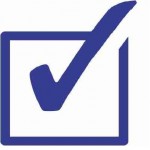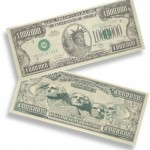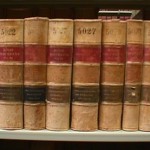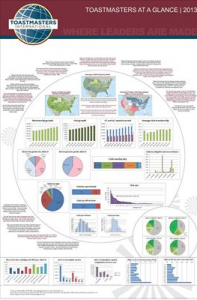 Annual business meeting proxies are how we do business. This year, Proposal A was on the table to amend the Toastmasters club constitution, but only 74% of clubs were represented. One district appears to have gotten every single proxy collected, D70 (southeastern Australia), 100%, even a new club that chartered Aug. 14 (Griffith Toastmasters), very impressive!
Annual business meeting proxies are how we do business. This year, Proposal A was on the table to amend the Toastmasters club constitution, but only 74% of clubs were represented. One district appears to have gotten every single proxy collected, D70 (southeastern Australia), 100%, even a new club that chartered Aug. 14 (Griffith Toastmasters), very impressive!
This was closely followed by another Australian district, D69 (eastern Australia), at 97% (missed 5 clubs) and my home district, D30 (Chicagoland), at 96% (missed 9 clubs).
Districts with (lots of) room to improve include D34 (Mexico) with just 37% of clubs represented, D52 (southern California) at 39%, and D82 (Sri Lanka, Tamil Nadu, Kerala, and Karnataka in India) at 49%.
The top quarter of districts beat 86% representation, the top half beat 75%, and the top 3/4 beat 66%.
While there are many things more important for Toastmasters districts to devote scarce resources to (no, not speech contests, I mean helping struggling clubs and building new clubs), this is the sort of thing that shouldn’t be that hard to do. A district proxy chair with a committee to call clubs and round up proxies makes an excellent High Performance Leadership (HPL) project!
Full details in the Excel spreadsheet here: Proxies2013
 The 2012 form 990 tax return for Toastmasters International has some interesting data in it. Total program revenue increased by 21.6%, due in large part to dues increasing by 33% (from $54 to $72/six month) on Oct. 1, 2011 (this was the first full year with the increase).
The 2012 form 990 tax return for Toastmasters International has some interesting data in it. Total program revenue increased by 21.6%, due in large part to dues increasing by 33% (from $54 to $72/six month) on Oct. 1, 2011 (this was the first full year with the increase).





 I’ve seen lots of interesting infographics from other organizations, but never one for Toastmasters, so I created my own, a 24″x36″ poster, and had 1,000 copies printed to hand out at the convention this month. They were quite popular, all given away in just three evenings, almost all just one at a time. Some people even asked me to autograph them!
I’ve seen lots of interesting infographics from other organizations, but never one for Toastmasters, so I created my own, a 24″x36″ poster, and had 1,000 copies printed to hand out at the convention this month. They were quite popular, all given away in just three evenings, almost all just one at a time. Some people even asked me to autograph them!